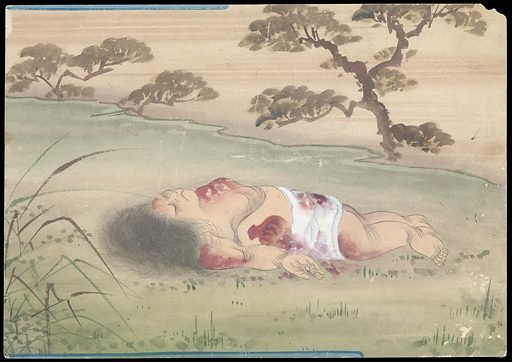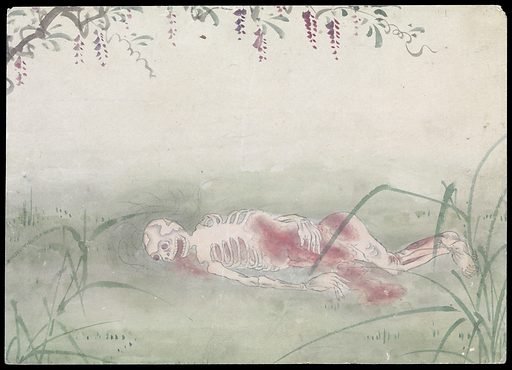The Decay Journey: A Deep Dive into the Stages of Human Decomposition
One thing that all of us know for sure is that immediately the heart stops beating and a person is declared dead, the body begins the decomposing process. The body usually undergo the same process unless it is cremated or preserved. Before we become dust, our body undergo lots of changes, and it is this changes that I will be discussing in this post.
The changes that the body undergo in the first few hours are different from what they would experience in the first few days, weeks or months. The rate of decomposition can differ depending on different factors including exposure to air, temperature, and humidity of the area where the body is. According to Forensic Anthropologists, there are different phases of decay, and these stages are being studied at body farms.

Image Credit
Body farms were created because scientists wanted to understand what happened to bodies when they decompose according to timeline. It was in the 1980s that William Bass, PH.D. a forensic anthropologist established the first human body farm. In body farms, the bodies are observed under different conditions to identify how their decomposition process go.
When a person dies and the cadaver is left in the open at moderate temperature, the body begins autolysis where carbon dioxide begins to buildup thereby causing the cell acidity to increase leading to the breakdown of the cell membranes. This is done by the lysosomes in the cells which is responsible for disintegrating. With the death of cells, the body also begins to cool down to reach the cool ambient temperature. It is at this time that Algor mortis begin.
As the body bet comes cold and the cells start to die, gravity begins to play its way on Red blood cells making them to pull to the bottom. This down pull of the red blood cell to the bottom causes the body to have a bluish-purple discoloration which is referred to as Livor Mortis (Blue color of death). It begins just after 20 minutes of death and can become visible in about 12 hours after death.

Image Credit
One thing that people notice with death is Livor Mortis (Stiffness of death) where the body begins to stiffen after 2 hours to 6 hours of death. Since there is no energy in the body to help with muscle relaxation, the muscles start to stiffen as a result of contraction. This contraction of the muscles can start to relax after about 2 days because the muscles are unable to contract anymore due to breaking down of muscle fibers.
With the death of cells, and no immune system to check microbes in the body, Anaerobic microbes begin to takeover the body leading to putrefaction (decay). The microbes feed on the available nutrients in the body including other classes of foods like carbohydrate, protein, fats, and they start to produce gases like Hydrogen Sulfide, carbon dioxide and natural gas which come together to be known as Cadaverine and Putrescine. It is these gases that causes the body to become bloated. As the skin decomposes itself, the body can rupture leading to the release of the gas.
The hydrogen sulfide in the body begins to react with hemoglobin in the blood leading to sulfhemoglobin which causes the greenish tints that are found in dead bodies known as Mabling. If the corpse is exposed in the air, it will attract flies which would lay eggs leading to maggots which would eat the remains. Fluids then begin to leak out of the body, and then the body goes into another phase known as the dry decay phase.
The dry decay phase last from months to hundreds of years depending on different factors. The body would be left with bones, and cartilages. Over time, environmental factors (Sun, Wind, and Rain) continues to bleach the tissue remains leaving the bones to interact with the soil. This interaction can be chemically and mechanically until the bones decomposes to dust.
In exploring the intricate phases of human decomposition, we confront the inevitable journey from corporeal existence to elemental integration. Each stage bears witness to the relentless passage of time, unveiling the fragile temporality of our mortal coil. As bodies transform into echoes of their former selves, the cycle of life and decay persists, underscoring the profound interconnectedness between life and the Science.
Reference
https://www.theguardian.com/science/neurophilosophy/2015/may/05/life-after-death
https://australian.museum/learn/science/stages-of-decomposition/
https://timeline.utk.edu/history/bill-bass-body-farm
https://archeologia.uw.edu.pl/zalaczniki/upload617.pdf
https://www.ncbi.nlm.nih.gov/pmc/articles/PMC2729224/
https://www.acs.org/molecule-of-the-week/archive/p/putrescine.html
https://www.ncbi.nlm.nih.gov/pmc/articles/PMC5783396/
https://www.ncbi.nlm.nih.gov/books/NBK554464/
https://www.ncbi.nlm.nih.gov/books/NBK534875/
The process of decay can be a very fast as well as slow event. I can imagine starting as soon as 20 minutes and taking several years for bones to disintegrate.
Thanks for your contribution to the STEMsocial community. Feel free to join us on discord to get to know the rest of us!
Please consider delegating to the @stemsocial account (85% of the curation rewards are returned).
Thanks for including @stemsocial as a beneficiary, which gives you stronger support.